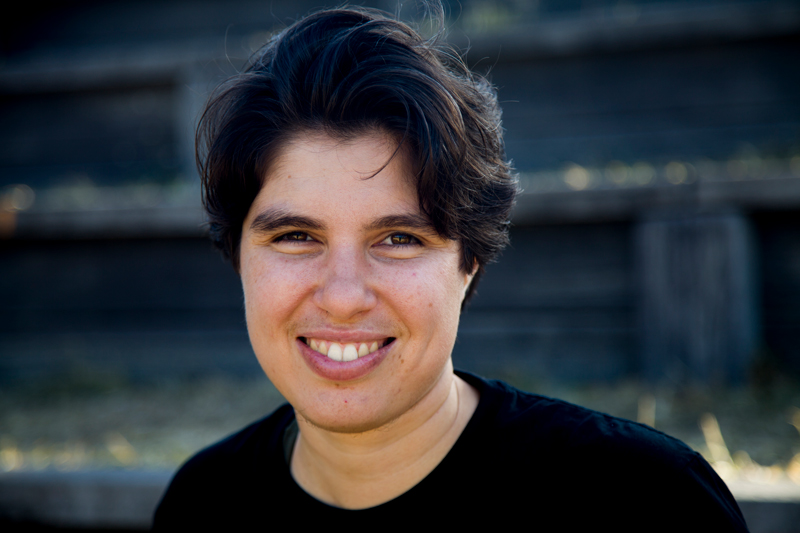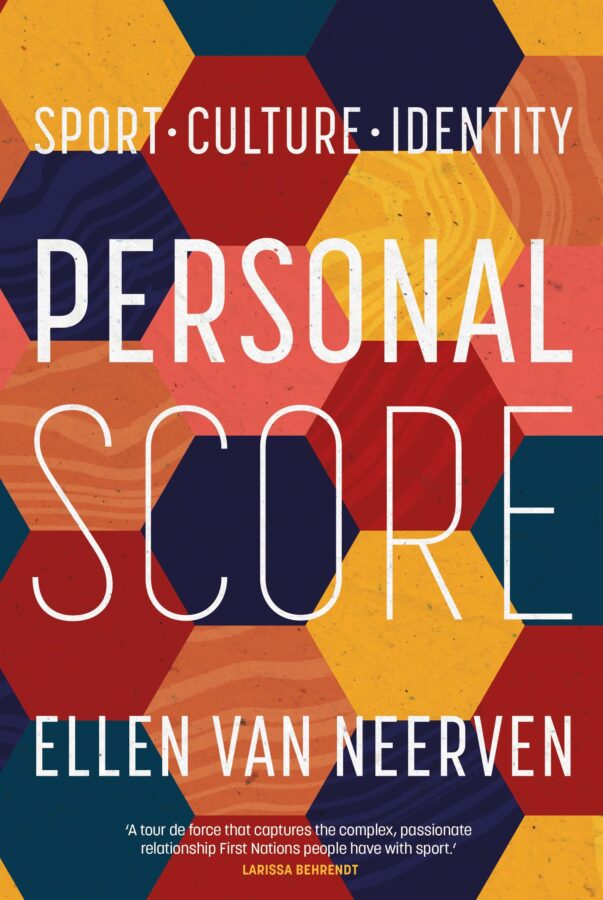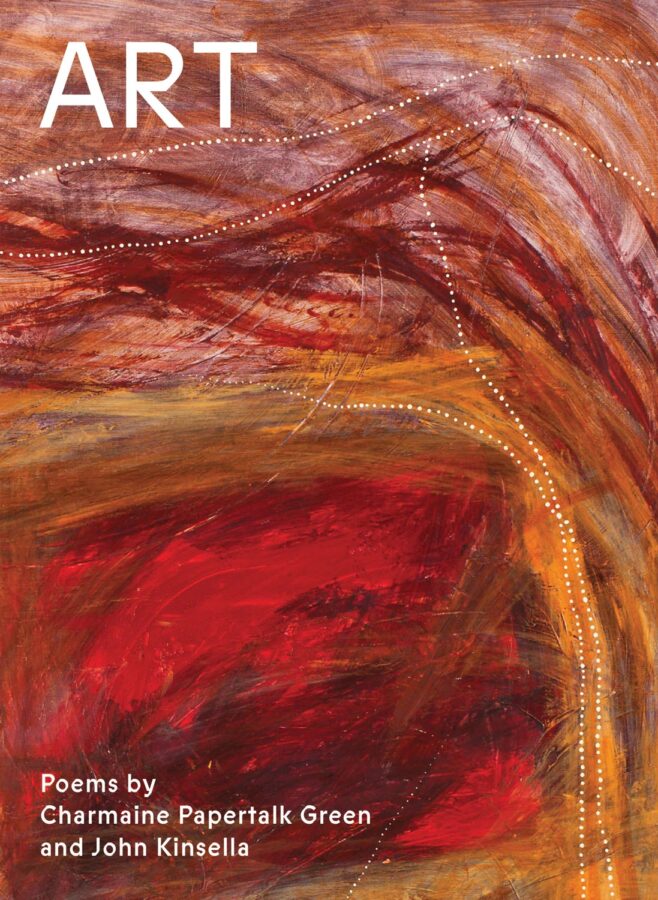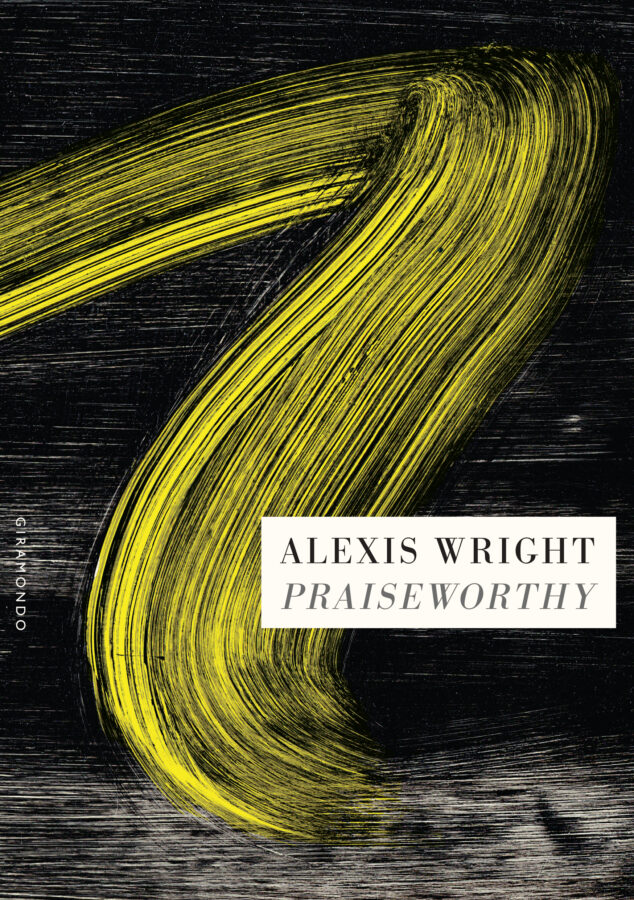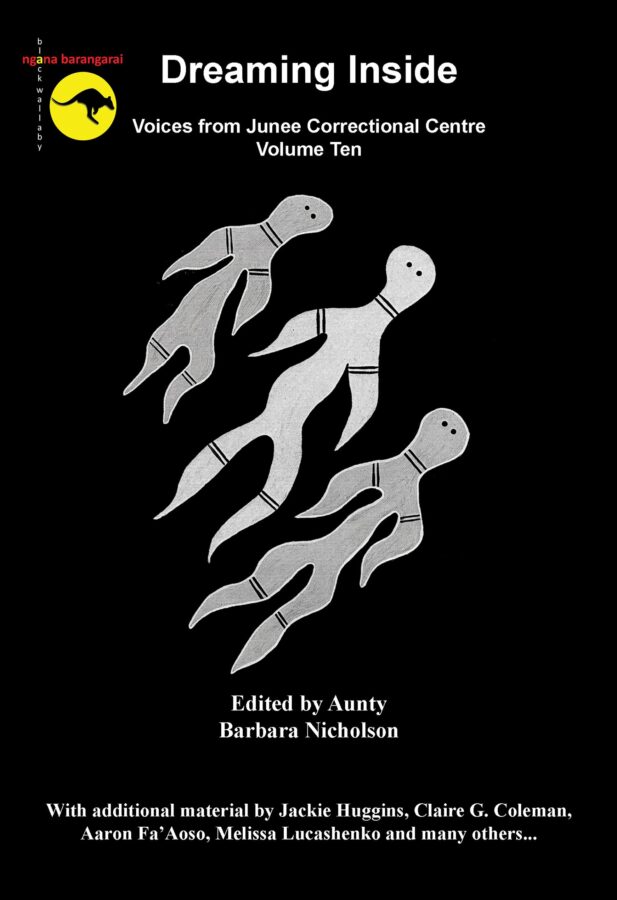place-identity
I betray Mairwar with my look, only half-looking, out of guilt. It is a sore trip back home to my suburb, hobbling from the ferry – knocked around by a football semi – I want to jump straight into bed.
I do have to eat. I make brussel sprouts, fried, with a lot of oil and garlic. Mum never cooked them like that – she boiled them – I don’t know if it’s the cooking technique or taste buds that now allow me enjoy this once-loathed vegetable. It’s a something I’ve picked up from eating in the States, and my partner, when she’s here, fries them like this too. I tidy up the kitchen, stack the dishes. My lease on this apartment will soon run out. But what is my lease on this dagun? What are the terms of place-identity?
My body is burning on the border. I have been doing the back and forth between Brisbane and Sydney, where my partner lives. I’ve finished a job I’ve worked in since I was 20-years-old, and I’m getting ready to move. This body, this now-sore, sorer-later body has lived and worked on Mairwar for a long consciousness. Every day I walked along the river from my home and crossed to my workplace in the inner south, at Kurilpa, place of the water rat. As I looked around, through the purple gaze of the too-soon bloom of jacarandas, I felt anticipated loss.
We were born here. My family are Mununjali, from Beaudesert, part of the Yugambeh language group of the Scenic Rim and Gold Coast. South East Queensland is my home. I had a feeling land was important to me from a young age. I remember being in the back seat in drives through the dry dust, dark, blood soil. We never seemed to be enough for the land, I remember that.
‘You’re feeling displaced,’ my friend David says to me, naming what I have been feeling for the first time. We had been walking along Mairwar for the last hour and I’ve just thought up a dozen fantasies of where my partner and I could live. ‘I feel the same.’ His son is in New South Wales, so we have both been making the back-and-forth trip.
Each time I walk along here I feel the urge to pull pieces of plastic and other rubbish from the riverbank, to rescue the river from its fate. I need glasses to see the minuscule pieces.
border-language
I am back on the old Logan track, a highway we continue to use. I have been doing workshops at Logan Central Library and attach myself here, where there’s welcome text in Yugambeh: Nyeumba Meta. Named in consultation with Aboriginal and Torres Strait Islander residents, Nyeumba in Yugambeh language means ‘teaching or learning’ while Meta in Torres Strait language means ‘house’. The library is a collection, yarning circle and artwork.
There was never one name for Yugambeh, nor just one name for a particular dialect group. Speakers from one group understand groups from neighbouring areas without much difficulty.
I have been reading the work of Penelope Kelsey (Seneca) and Cari M. Carpenter on American Indian place-identity in Allison Adelle Hedge Coke’s verse work Blood Run, ‘an evolving story about place-identity and sacred geography’. The Blood Run Site on the border of Iowa and South Dakota has become an important archaeology site. Colonial deductions carry the dangerous idea that a place must belong to one group, while in reality this was a gathering site, and many groups contributed to it. The poetic work is a ‘living narrative’ that ‘portrays a Multitribal intertribal precontact identity that has a purchase on the present.’ Kelsey and Carpenter draw out what Allison Adelle Hedge Coke (Metis, Huron, Luso, Cherokee) shows: ‘identity to place is dynamic – not fixed – always moving, always changing – nothing is static’.
We circle, we move, we leave and return. The grass isn’t still. Nor the water. Nothing is static. Country extends over borders – my family let me know in different ways that we have connections in both South East Queensland and Northern New South Wales. Particular places in Northern New South Wales sparkle in my mind. My uncle in Byron is one of the smartest people I know. He works on the land, future-proofing it so we can enjoy it for years to come. One of the prime locations he works at is the Lighthouse – the most eastern point of Australia. This has always been a place of leisure for our people, and I continue that pursuit of leisure, visiting for holidays and festivals.
I have read Geelong means ‘tongue’, by the local people, as it is the shape of the bay. Cape Byron is walgun, the shoulder jutting out of the bay. I want to ask Aunty Delta, an Awakwal woman, a traditional owner of the area and a close associate to my uncle, how the ancestors used knowledge to map and describe place; Jingi Walla ngali walgun, is the Awakwal welcome to our shoulder.
A viewpoint of the region, up here at the lighthouse. Soft sandy beaches below. Forest beyond. Paradise of seafood and wildlife, rainforest fruits, shelters, clean water. Over time, narratives have layered and wrapped around land and mob. The water came one day, and left a shoulder, the promontory is submerged. Uncle points to Wollumbin – the cloud catcher.
I have so much to learn from him. Going out for dinner together with my other cousins becomes a cultural lesson. He talks about the historical importance of eating from the source, the benefits to health and prevention of sickness. As he interrupts our goodbyes to spend a good twenty minutes telling us about the stars above, I know I feel like my uncle. I can see myself repeating this for future generations.
My cousin and I are driving back to Queensland across the border. Travel to New South Wales when I was a young child always felt like a bounce. My brother and I would sleep in the car. Colonial mapping, rewriting history, is a force of the past as well as the present. They colonised our rivers and lands. I try to observe and learn when and where other Aboriginal people use placenames and to adopt First Nation strategies and systems. This state border is an artificial border, marked by a sign, and a sculpture. The surveyors did not care about anything but bones and latitude and lines. Not a care for sacred places or ceremony. I have been thinking about our states for a while, how they match up to states of being. There is a fair case for Northern NSW to join with Queensland, and the border to be opened up. We share country, geography, story and languages. Connection to and movement across land is not defined by colonial Queensland or New South Wales.
Where would these borders fall? I hesitate. Borders are an act of colonisation – clan borders are undefined, loose, and riff on natural borders and seasons. Sport and movement cuts across borders through community events. The Wollumbin Warriors, a rugby league team from Tweed, on the border, have the option to play in either the Murri Carnival or the Koori Knock-Out. They won the Murri Carnival and this year competed in the Knock-Out.
Back in the city, I receive an email about a plan for a heritage and remembrance centre in Meanjin. This proposed cultural centre is something we haven’t had before, and will tell the stories of First Nations people in South East Queensland. We are being asked to fill in a consultancy questionnaire. My Bundjalung colleague and I have a robust discussion at work about the ideal location. In my heart, I want it to be in Kurilpa, near Musgrave, near Boundary St, near Gilimbaa and kuril dhagun. This is a place that has resonated with me since I was a youngfella going to NAIDOC with my mum and brother. I feel good here. My colleague argues that Kangaroo Point, which also includes the Aboriginal Centre of the Performing Arts, provides a view of the city that goes well with such a remembrance cite.
When we were young my mum was taking a Yugambeh TAFE class and listening to tapes; being a studious student of the language, practicing on the bed, my brother and I crawling over her trying to help. She had little place cards and her writing of case marking is scrawled over books. Command, present, dreaming. We had conversations. I am having conversations with her now, flicking through the pages. In transit, transitive.
Uncle tests me on my grandmother’s language. My family have been students of our culture for a long time. The land is the teacher of language, I feel. Language is so important to land and mapping. I worry about cultural literacy – as a country are more likely to name our wine regions than we are to name our language groups. Yet we all speak Aboriginal words everyday.
Norman Tindale’s map, Tribal Boundaries in Aboriginal Australia, was published in 1974 and shows First Nations Group Boundaries at the time of European contact. It is not a comprehensive map and is not without its flaws, but has long been seen as the ‘best we have’. The Indigenous Queensland language map produced by State Library of Queensland in 1999 with its specific focus has more detail of Queensland Indigenous languages .
Mununjali land sits between two rives; Dugulumba (Logan River) passes from the southern ranges of the Scenic Rim, through the City of Logan and spills out into Moreton Bay. Billinooba (Albert River) runs parallel.
Planning has been underway for future Yugambeh language speakers in the South-East, largely through the work of the Yugambeh Musuem in Beenleigh. Yugambeh is embedded in some schools, is the feature of Australia’s first Indigenous language app, and is reintroduced in other environments through commercial partnerships. Deemed an open language, both Indigenous and non-Indigenous people are encouraged to engage. Immersion is happening in all sorts of ways. In 2013 our nation’s anthem was reinterpreted and sung in Yugambeh: Wandah Jageegan Djagun (Rise Up Beautiful Country). Now this is a common occurrence. That same year Bundjalung author Melissa Lucashenko created Mullumbimby, placing language from South East Queensland and Northern New South Wales into literary fiction for the first time, writing our stories and perspectives with a local tongue.
community-cities
I have never felt confusion in June. I am a Maroon supporter without doubt. Until this year I didn’t know any black supporters of the Blues (I’ve met two, and have been corrected). For many Kooris, it’s simple, the Blues don’t have much of a history or reputation choosing Indigenous players. The Maroon jersey has a stronger sense of pride for blackfellas and is a more seductive marker of identity, it carries capital.
I read an article in The Guardian by Paul Daley that tells there are now more Indigenous people in Brisbane than Sydney. This adds more fuel to the banter with my Koori mates – it had long been the convention that Sydney has been the largest Indigenous population. I tell my friend Anita, who is not happy. Move over Sydney, the article reckons, Brisbane is the Indigenous capital of Australia.
The best book launch I’ve ever been a part of was at Kurilpa, on Mairwar Green, the lawn between two arts institutions. On the top of the hill, with a view of the glowing river, members of Uncle Lionel G. Fogarty’s Mununjali and Wakka Wakka family performed corroboree. The words in the pages of Eelahroo (Long Ago) Nyah (Looking) Möbö-Möbö (Future) and the importance of the transmittance of culture came to life in this movement. There were the oldest members of the family, and the youngest there, shaking a leg, and a small crowd of a dozen or so. More joined us, tourists, students, curious couples, groups. I tapped my feet on the grass and sang along to K’Gari Gynda Nami, welcome song, and other songs familiar to me. The sky tilted, the darkness leaned in. The place felt old to me in a way it hadn’t before. A few months later I also witnessed Clancestory, a meeting of the clans. The venue was Suncorp Piazza along South Bank area, the tourist gilt of Meanjin. The piazza was full. So many blackfellas in the audience with me. I felt moved as I watched the local Yagera and Turrbaal mob deliver a traditional welcome and gift exchange to each of the outside clans, from local mobs like the Yugambeh mobs, to those as far from origin as the Torres Strait. The Aboriginal and Torres Strait Islanders in Brisbane that as a group have ‘overtaken’ Sydney blacks to be come the biggest population in a city, come from many groups. Many different mobs live here, including from other islands and continents.
It is swimming season again, and Anita and I swim at the pool at Musgrave Park, central Murri station. Musgrave can adjust to be a memorial site, a protest site, an evacuation site, a site of celebration depending on need. Those old trees, those poles, you can breathe here. This culture in the city, the gathering; of course if feels unique to me. I won’t find places and situations like this in Sydney.
I don’t know hardly anything about Sydney. My ignorance is heady. The Council of the City of Sydney acknowledges the Gadigal of the Eora Nation as traditional custodians, as well as recognising ‘about 29 clan groups of the Sydney metropolitan area, referred to collectively as the Eora Nation’. I know the iconic Redfern images, The Block, the mural – so striking on my first trip down as a teenager. If I shift to this city, my transition will be accompanied by a second edition of Aboriginal Sydney by Melinda Hinkson, and a list of local people to get in touch with while I’m down there. Perhaps walking with my partner around Cadi will not be unlike walking along Mairwar – water will tell.
The Brisbane and Sydney tug-of-war going on in my head is stuck in a stalemate. Comparison brings a third idea into equation. There is also a residency in Melbourne to consider. I think fleetingly about Melbourne, the city again that week the centre of an AFL incident, another supporter, another Indigenous player. Do I want to live in a place like this? Let’s not use sport as a benchmark here for inclusivity and welcome.
Last time I was in Melbourne I had a long conversation with my friend, an urban planner, about engagement plans and strategies, ‘pretty lights projected on colonial buildings’. We talked about Indigenous cities, and how to make them. The Land writers, the street artists, the protests, how do we make our mark and make Indigenous meaning on cities? What is the inclusivity I am seeking of our institutions? Can it even be articulated?
choice-politics
My choice of where to live, of course, is a privileged choice, choosing out of the three major cities of Australia. Those in Syria do not have that choice. Those people in limbo on Nauru and Manus do not have that choice. I do not have to leave because of war and murder. War and murder have a national context, of course. The federation of Australia stripped people of their choice of where to live. The settlers did not assimilate to the land and society when they came. Genocide has many underground roots.
In 1897, Queensland passed the Aboriginal Protection and Restriction of the Sale of Opium Act (Qld), allowing the Chief Protector to remove local people onto and between reserves and hold children in dormitories; Aboriginal stations or ‘managed reserves’ were in force in New South Wales from 1883 onwards through the creation of the NSW Aboriginal Protection Board. Aboriginal people were moved by force to and off stations, and all aspects of life were controlled, including rations, housing and education.
Australia’s legislated approach to immigration from federation until last century, is often described as the ‘White Australia’ policy, as it favoured applicants from select countries and ethnicities. Those who came here were designated a place. Displaced people and assisted immigrants and refugees first experienced life in migrant reception centres, also termed hostels, holding centres, or more commonly migrant camps. Most were refurbished military barracks, like Wacol, in Ipswich. Another historical migrant centre in South East Queensland was Yungaba Immigration Centre (known today as Yungaba House), at Kangaroo Point.
I end my wrestle with privilege in the anticipation of loss. I am from here, that is the difference, that is what I’m feeling. I am bound by Mairwar – source of life. Mununjali rivers. Shoulder facing the ocean. And I wrap around imagined futures. Imagined cities with Indigenous markings.
In my choice I must not forget my ancestors’ position. Their stories are my ancestor-story, my ancestry. So is their fear. Love and loss are one and not without each other. Between love and loss and fear is where and how I live.
References
Melinda Hinkson, Aboriginal Sydney (Aboriginal Studies Press, 2010).
